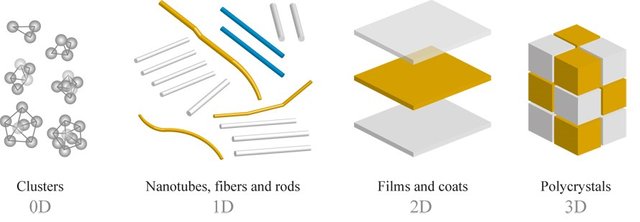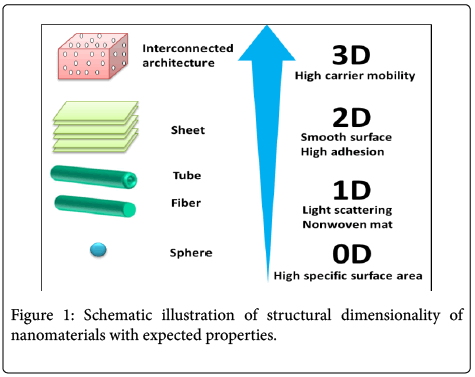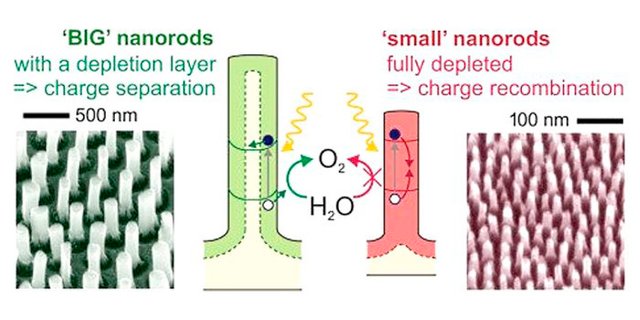Is this the new way to generate energy?
New 3D nanomaterials to generate energy, will this be possible?

Source
That is why I want to share with you a great discovery while doing the research and is the generation of energy through nanomaterials, more specifically 3D nanotech.
It should be noted that nanomaterials are materials with morphological properties smaller than 1 μm in at least one dimension.1 Despite the fact that there is no consensus on the minimum or maximum size of a nanomaterial, some authors restrict its size from 1 to 100 nm, a logical definition would place the nanoscale between the microscale (1 μm) and the atomic/molecular scale (around 0.2 nm).

Source
In these devices, which offer a good enough performance to be used in the generation of hydrogen effectively, the surface of the nanostructured semiconductor material absorbs solar energy and acts as an electrode for the electrolysis of water, its decomposition into oxygen and hydrogen. In spite of everything, with a capacity to absorb 12% of the solar spectrum and with a relatively low theoretical limit for the photocurrent generated under solar illumination, the material seems far from offering the necessary features for a practical application.
Two groups of tungsten oxide nanocolumns with different radius and height (70/700 nm on the left and 13/130 nm on the right). The large nanocolumns are more effective in the photoelectrochemical separation of water since the photogenerated charges do not recombine rapidly as it happens in the small ones.

Source
In this framework, researchers from the group Microsystems and Nanotechnologies for Chemical Analysis (MINOS) of the Rovira I Virgili University (URV) and the Technological University of Brno, in the Czech Republic, bring to light new three-dimensional nanomaterials with photoelectrochemical properties for the generation of energy.
Source
In the study, self-organized clusters of tungsten oxide columns have been developed using the anodization technique (a protective treatment applied to metals through which a larger surface oxide layer is created that would be formed naturally ) assisted by titanium oxide and porous anodic alumina, an aluminum oxide prepared by electrochemical means.
Using different anodization conditions, different nanostructures have been obtained in the form of columns (with different diameters and heights). By varying the conditions of the subsequent treatment, at 500-550 ° C in vacuum or air, together with the selective dissolution of the porous anodic alumina, it has allowed controlling the composition of the nanocolumns of tungsten oxide, its crystalline structure, and the electrical properties.
Excellent performance in the largest nanostructures.

Source
In particular, the larger diameter structures treated in air show an excellent behavior in the photoelectrochemical decomposition of water: a low start potential, a high photocurrent generated and the absence of signs of photocorrosion.
These promising results are likely to improve, if higher and more densely clustered columns are used so that the efficiency in capturing solar radiation and separating the charges generated can be increased.
With this research, then, new nanomaterials have been created, the characteristics of which allow the photoelectrochemical decomposition of water and facilitate the generation of hydrogen. Therefore, this technique uses a form of renewable, virtually inexhaustible energy that does not produce greenhouse gases.
In conclusion.

Source
The appearance of these new experiments with nanomaterials constitutes a giant advance in the early generation of renewable energies, which can be called synthetic and that is almost inexhaustible. All this would mark a before and after for the energy industry.
For more information visit:
- https://www.sciencedirect.com/science/article/pii/S1748013217302426
- http://www.sciencedirect.com/science/article/pii/S2211285517300368
- http://www.sciencedirect.com/science/journal/22112855
- https://en.wikipedia.org/wiki/Nanomaterials
- Nanostructures and Nanomaterials, Guozhong Cao (University of Washington, USA)

To the question in your title, my Magic 8-Ball says:
I think the same, these new technologies will revolutionize the world in the energy field
Great post! Thanks for putting it together :)
I'm glad you liked
Congratulations! This post has been upvoted from the communal account, @minnowsupport, by giovaabbatichio from the Minnow Support Project. It's a witness project run by aggroed, ausbitbank, teamsteem, theprophet0, someguy123, neoxian, followbtcnews, and netuoso. The goal is to help Steemit grow by supporting Minnows. Please find us at the Peace, Abundance, and Liberty Network (PALnet) Discord Channel. It's a completely public and open space to all members of the Steemit community who voluntarily choose to be there.
If you would like to delegate to the Minnow Support Project you can do so by clicking on the following links: 50SP, 100SP, 250SP, 500SP, 1000SP, 5000SP.
Be sure to leave at least 50SP undelegated on your account.